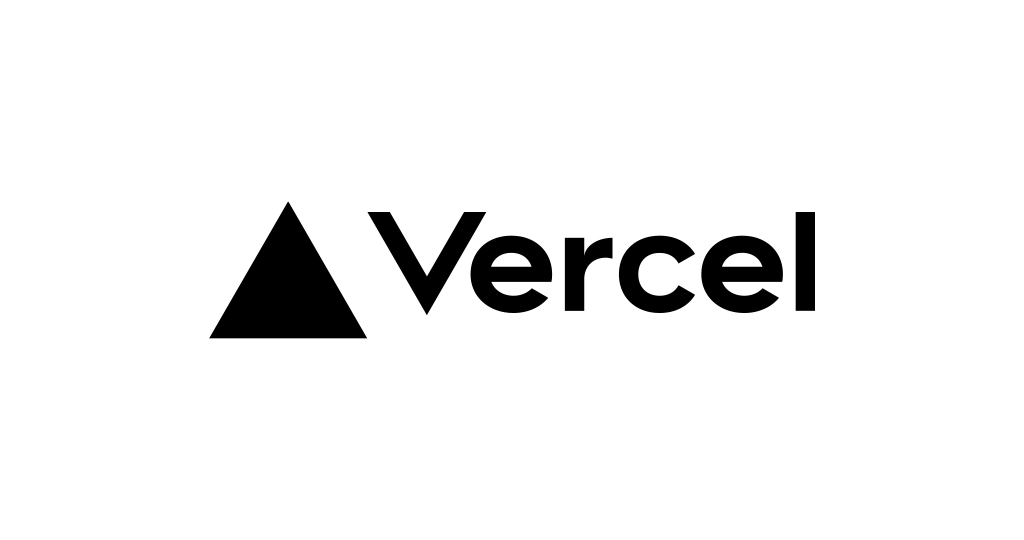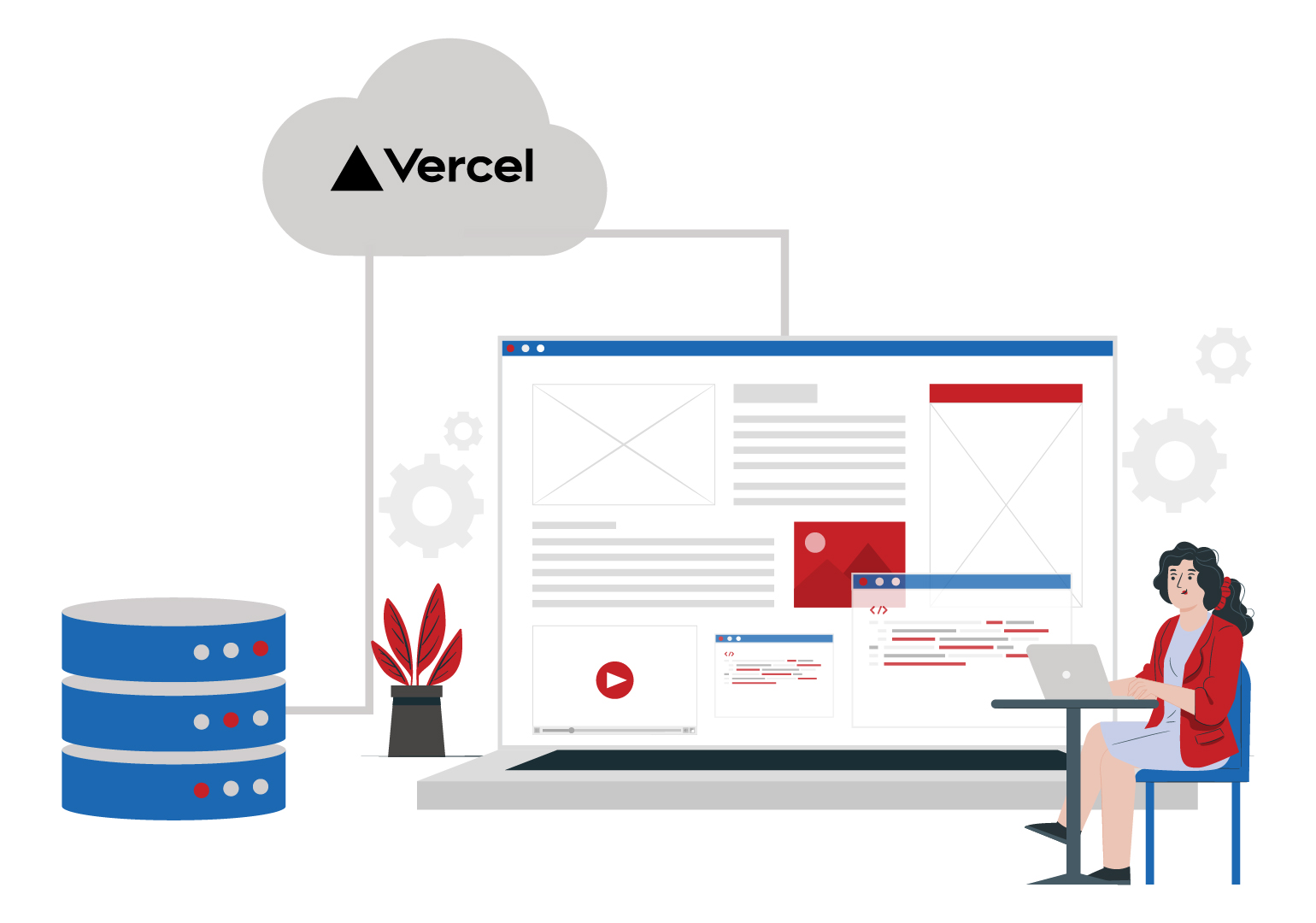
What Is VERCEL? Is It The Right Platform For Front-End Developers?
Julian Wallis
14 min read

🔔 This article has been updated with the latest information & developments as of March 2023.
Have you been wondering what Vercel is and how it might help your front-end development process? Maybe you have never heard of it before, but this article explains everything you need to know about the platform and how it can help you deploy websites and apps fast!
Here’s an interesting fact: Do you know that Vercel is used by over 100k developers every month from Apple, IBM, Deliveroo, and many more?
You may or may not have heard of Vercel, but it certainly will get front-end developers’ attention. The platform helps front-end teams work faster and more efficiently by combining the best development practices with a specialised focus on end-user performance.
It speeds up the process of creating, testing and deploying web pages by compiling all of the necessary code into a single file. In turn, it makes tracking changes, debugging errors, and ensuring consistent style across pages easier.
Interested to learn more? This blog post will explain what Vercel is and how it can help your front-end team perform better.
What Is Vercel? 🔺
Vercel (formerly known as ZEIT) is a cloud platform that enables developers to host websites and web services that deploy instantly, scale automatically, and require no supervision. Founded in 2015 by Guillermo Rauch, the platform offers an intuitive user interface with minimal configuration for hosting static site generators such as Gatsby or Hugo and various CMSes like Contentful, Prismic, or WordPress. Vercel is also a parent company of the Next.js framework — and comes with many cool features.

Frankly speaking, Vercel is the most accessible platform to deploy websites. By connecting the GitHub repository to it, you can simply deploy the main branch to the platform’s domains — and it does all the heavy lifting by:
- Deploying your site to a global Content Delivery Network (CDN) instantly with a single click,
- Ensuring your site is always online by intelligently monitoring and automatically scaling frontend capacity, and
- Taking care of SSL certificates or HTTPS on your behalf.
🔥 3 Outstanding Features
If those advantages aren’t good enough for you, here are three of Vercel’s outstanding features that will get you really excited.
- Vercel allows developers to set up their projects to their custom domain (or a free URL) and a free automatic SSL, protecting shared encrypted data between the server and the browser.
- It integrates directly with GitHub or GitLab. It allows developers to host static websites and web applications that deploy upon every push in branches or pull requests to preview changes.
- It scales automatically; it requires no orchestration — and operates and monitors with no server configuration.
Benefits Of Vercel ⭐
It’s super simple to deploy websites or applications on Vercel. There is no need to handle issues such as the unavailability of servers since hosting your business site on the platform means deploying it instantly. It’s also configured with automatic scaling in mind — so no matter how popular your website becomes, there will always be enough computing power to support it.
Vercel handles all the administrative work to ensure your site is up and running smoothly. What’s more, it provides personalised content around the globe by collecting real-time information about how visitors are interacting with your website or service!
And that’s not all!
If you like to keep up with the latest trends in the development of leading platforms and technology, Vercel may be suitable for you since its platform works well with almost all modern frameworks. This means any developer can start building apps within minutes of signing up. What’s also important to remember is that when using Vercel, there is no need to worry about maintaining servers, scaling applications, or updating software. These tasks are done automatically by the cloud platform.
It doesn’t matter if you’re a seasoned professional looking for a new place to host your website/service or if you’re just getting started with front-end development; Vercel caters to both parties by making it easy for anyone to get started. There is no need to worry about the rate limits after you register. You can build and deploy at any time without worrying about limitations — so you can feel free to work on any project you like.
The marketplace of Vercel is equally powerful and helpful. It’s the place to connect third-party tools, like Slack, Google Lighthouse, etc., to a project you have set up. Besides, you can connect with your internal teams to work collectively and configure deployment settings accordingly.
How Does Vercel Work? ⚙️
To deploy applications on Vercel, you should create a project that groups deployments and custom domains together. Each project will receive deployment requests from GitHub, GitLab, Bitbucket, or Vercel CLI.
You can easily create a project from the Vercel dashboard or import it from an existing Git repository. You can custom name the project, edit build and development settings, modify the root directory, and configure other variables. Besides, you can also add custom domains to each project. In addition, the platform supports deploy hooks, which are unique URLs that accept HTTP POST requests and trigger deployments.
The platform comes with a password and SSO protection to add to the security of the deployment process, ensuring that the visitors of preview deployment must log in with a personal Vercel account. Projects can be transferred between Vercel Accounts with zero downtime and no workflow interruptions. This is particularly useful when upgrading from a personal account to a pro team — but more on its pricing below.
Some Vercel Alternatives 👥
Vercel stands out for its commitment to customer service, community connection and comprehensive documentation. Taking a deeper dive into these aspects of the platform reveals how user-friendly it is with efficient support systems in place. Here we compare Vercel’s stellar performance against two other alternatives on the market.
🕸 Vercel Vs Netlify
Netlify is a well-known platform utilised for web development that prioritises the automated deployment process. Its drag-and-drop interface eases the burden of deploying websites while supporting various static site generators and frameworks such as Jekyll, Hugo, and Gatsby. Furthermore, it provides built-in continuous deployment features fashioned after Git-based workflows were developed to facilitate version control collaboration among teams.
🌐 Vercel Vs Heroku
Developers can leverage the cloud platform called Heroku to deploy, manage and scale their web applications. With a variety of programming languages and frameworks available, it offers an array of plugins, such as databases, and monitoring tools, alongside third-party services integration. Furthermore, developers have access to container-based deployment using Docker images which enables efficient management of deployed apps on Heroku’s servers.
Vercel, with its sophisticated serverless deployment capabilities and emphasis on website performance enhancement, offers distinctive features. In addition to supporting numerous languages and frameworks, the platform boasts a user-friendly interface as well. As for Heroku – it provides an extensive range of plugins and add-ons, such as databases and monitoring tools, besides container-based deployments support options.
In brief, Vercel, Netlify, and Heroku are cloud-based platforms for website development and deployment. Every one of these has its own distinct features as well as capabilities. It is crucial that developers assess their demands or preference to select the most appropriate platform based on requirements.
Vercel Pricing Breakdown 💰
It might sound too good to be true, but all of these features are available when using Vercel. For non-commercial sites, these benefits do not cost anything since the platform does not charge users anything in exchange for hosting their applications in the cloud. Of course, one should expect some business model behind the scenes even though they don’t have to worry about anything when using it. Under the ‘hobby’ pricing plan, you get to deploy from CLI or personal git integrations — you even get a preview for every git push.

It’s worth noting that there are both paid and free plans available with Vercel. For hobbyists, whether or not your website or service becomes popular, you will never have to pay a cent — the cloud platform does it all for you. If you need additional resources in the future, upgrading to a paid package is easy since everything comes with instant activation after ordering (no waiting period!) There’s no need to contact customer support or ask questions; upgrade when necessary!
With a pro plan, you choose the pay-as-you-go model, which gives you greater flexibility and control over your usage. You can upgrade your bandwidth, serverless function execution, and image optimisation features at a price of around $55 for 100 gigs of data.
For professional sites, you get two choices: pro and enterprise. The pro plan is priced at $20/month per member, while the enterprise plan comes with custom pricing. For more information, please visit Pricing — Vercel.
Remember that the pricing will increase if your company transfers terabytes of data and uses more gigabytes of lambda/serverless execution. If you are unable to pay for your account renewal on time, Vercel freezes all your deployments, so you need to be aware of that.
🛒 Vercel Vs AWS Pricing
Vercel offers developers an easy way to jumpstart their web projects. For basic needs, the free plan gets them HTTPS security and unlimited hosting at no cost – with some limitations, such as a maximum of 12 serverless functions per team. For more advanced requirements, you can upgrade for $20-$100/month depending on your plans’ features: like custom domains and priority support, plus collaboration tools & analytics in the Pro plan or private networking & dedicated account manager with Business.
AWS pricing may seem daunting, but if you know what to look for, it can be surprisingly affordable. Amazon S3 storage has a free tier that provides 5GB of storage and 20K GET requests per month at no cost – plus, its pay-as-you-go model covers all your needs beyond the first year! Even better is their Elastic Beanstalk service which offers developers usage without any extra costs; however, as utilisation increases, so do associated charges like compute power and data transfer fees.
💸 Vercel Vs Netlify Pricing
Netlify, like Vercel, offers a free plan with basic features like HTTPS, custom domains, and continuous deployment. Their paid plans start with the “Starter” plan, which costs $19 per month per site, and provides additional features like support for password-protected sites, form handling, and split testing. Their “Pro” plan costs $99 per month per site and includes even more advanced features like support for team collaboration, identity management, and advanced analytics.
Looking at the big picture, Vercel’s pricing packages hold their own against other platforms that operate similarly, such as AWS and Netlify. Although there are more services available with AWS, figuring out how to use them can be complicated, especially when it comes down to keeping track of costs. When matched up against this straightforward approach taken by Netlify in terms of its pricing options, however, it is found lacking several functions when considering what Vercel’s serverless deployment capabilities bring onboard, which shows an advancement in comparison.
Netizens should take into account specific plans catered toward particular needs along with a comprehensive analysis of provided features before selecting a cloud platform for themselves. A wise decision made here ensures cost-efficiency overall while fulfilling required priorities or preferences chosen, hence becoming crucial due diligence carried out prior to getting started.
Limitations Of Vercel ⛔
What could possibly go wrong when using Vercel? What are some of the challenges to expect? You should know that there are certain things to consider before signing up with the platform— it’s important to remember that this service has its limitations, just like any other tool.
Vercel isn’t made for business users; it’s developer-centric and requires highly skilled developers or a professional agency to manage the tech stack. To leverage a Jamstack platform with cloud-based infrastructure to its full potential, you need developers with specific technical skills that aren’t always a dime a dozen. That puts companies in a developer lock-in and creates issues when your team is not around.

One of the cons from the developers’ perspective is that Vercel lacks robust documentation and has some maintenance issues. If your website or app requires high availability, Vercel might not be suitable for you because there are no built-in crash-handling mechanisms. This also means that making significant changes will need downtime, so you’ll have to keep this in mind as well.
It’s also worth mentioning that since Vercel does not provide ongoing management or optimisation services, your website or service may experience downtime if you do not maintain it yourself. In addition, Vercel does not store any files itself; however, everything can be managed via GitHub. Despite a great experience for developers and cutting-edge technology, Vercel doesn’t automate development workflows — developers will have to host code and deploy a website or app endpoints manually.
Which Framework Should You Use With Vercel? 🤷♂️
Although Vercel offers a wide range of frameworks for developers to work with, from Gatsby to Angular to Hugo, it’s optimised in one platform: Next.js.
Next.js is an open-source framework based on Node.js that creates single-page applications using React library. It uses server-side rendering (SSR), SEO tools, and automatic code-splitting to create landing pages and interactive eCommerce websites.
Next.js provides users with standardisation tools or features to speed up web development processes, such as automatic code splitting via dynamic imports and automated code transpilation for deployment purposes.
With Next.js and Vercel, you can deploy any front-end app with zero configuration and scale dynamically to millions of pages. Next.js advocates for low code; this is the core principle of the design-meets-development approach to the front end, where Vercel takes care of the back-end work and frees the front-end developers with the back-end burden. It’s all about abstracting away the back end and helping developers build things on top of cloud or Jamstack platforms.
Some Considerations When Using Vercel 💭
Vercel is a powerful cloud- and serverless platform for hosting sites, but many have learned that it does not necessarily guarantee perfect security. It’s important to remember that when using this platform, your data remains as safe as the strength of your passwords.
While there are some helpful protocols in place, such as SSL encryption and private servers networks from Vercel itself, authentication systems must be set up by account owners themselves with secure passwords – leaving you ultimately responsible for protecting sensitive information on their website or app.
Since Vercel is hosted on Amazon AWS, the security standard follows the same industry-level best practices. This means that Amazon provides top-of-the-line tools for managing access to your account with features like multi-factor authentication. This also means that Amazon ensures the confidentiality of data while supporting compliance requirements, rendering it a better choice than many competitors. Amazon AWS supports two-factor authentication at no cost!
In addition, it’d be essential to remember that users are not provided private server networks with Vercel. There may be latency issues when serving content across different regions — so keep this in mind if your website or service requires low latency.
Conclusion: What Is Vercel? 📋
Vercel is an excellent platform for frontend frameworks and static sites or apps, built to integrate with your headless content, commerce, or database. They provide a frictionless developer experience to take care of the hard things: deploying instantly, scaling automatically, and serving personalised content around the globe.
Hence, if you’re looking for a platform to help take your business to the next level and have an excellent team of developers or a software agency to work with, Vercel may just be what you need. Vercel provides an easy-to-use experience for developers and makes it simple to deploy sites that are both fast and delightful for users. It also makes it easy for front-end teams to develop, preview and ship delightful user experiences where performance is the default. However, make sure to unravel some of the limitations and considerations before you sign up for Vercel.
Ready to get started? Reach out to us, and we’d be happy to discuss if Vercel is a good fit for your business ecosystem to help you get better results!
Topics
Published On
February 21, 2022

